
Vanport, sometimes referred to as Vanport City or Kaiserville, was a city of wartime public housing in Multnomah County, Oregon, United States, between the contemporary Portland city boundary and the Columbia River. It was destroyed in the 1948 Columbia River flood and not rebuilt. It sat on what is currently the site of Delta Park and the Portland International Raceway.
The Cotton Club was a nightclub located in North Portland, Oregon, United States. Located at 2125 N. Vancouver Avenue, the club gained attention during the 1960s as the "only nightclub on the West Coast with wall-to-wall soul." Celebrities such as Cab Calloway, Sammy Davis Jr., Cass Elliot, The Kingston Trio, Joe Louis, and Archie Moore would visit the nightclub when they were in town.

Ulysses S. Grant High School is a public high school in the Grant Park neighborhood of Portland, Oregon, United States. Grant serves inner and central Northeast Portland and southeastern North Portland. It is the second largest high school in the Portland Public School District.
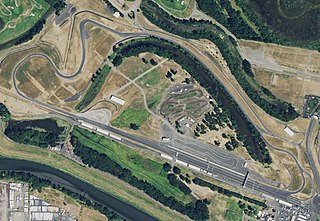
Portland International Raceway (PIR) is a motorsport facility in Portland in the U.S. state of Oregon. It is part of the Delta Park complex on the former site of Vanport, just south of the Columbia River. It lies west of the Delta Park/Vanport light rail station and less than a mile west of Interstate 5.

The history of the city of Portland, Oregon, began in 1843 when business partners William Overton and Asa Lovejoy filed to claim land on the west bank of the Willamette River in Oregon Country. In 1845 the name of Portland was chosen for this community by coin toss. February 8, 1851, the city was incorporated. Portland has continued to grow in size and population, with the 2010 census showing 583,776 residents in the city.

Oregon Shipbuilding Corporation was a World War II emergency shipyard located along the Willamette River in Portland, Oregon, United States. The shipyard built nearly 600 Liberty and Victory ships between 1941 and 1945 under the Emergency Shipbuilding program. It was closed after the war ended.

The Armory, historically known as the First Regiment Armory Annex, and home to Portland Center Stage at The Armory, is a historic building with two theaters and is located in Portland, Oregon, United States. It was built in 1891 by Multnomah County to house the Oregon National Guard. In 2000, it was added to the National Register of Historic Places. Following a $36.1 million renovation project that lasted from 2002 to 2006, the building home to the theater company Portland Center Stage which produces 11 productions each season. An estimated 150,000 visitors visit The Armory annually to enjoy a mix of classical, contemporary and world premiere productions, along with the annual JAW: A Playwrights Festival, and a variety of high-quality education and community programs.

Delta Park is a public municipal park complex in north Portland in the U.S. state of Oregon. Delta Park is composed of two distinct sections referred to as East and West Delta Park. The Owens Sports Complex is a notable attraction of East Delta Park, bringing teams from across the West Coast to compete in an array of sports.
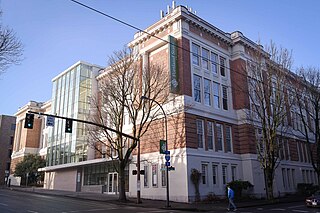
Lincoln Hall is an historic building located in Portland, Oregon, built in 1912. It is the home of the theatre, film, and performing arts departments at Portland State University. It was originally home to Lincoln High School before becoming a part of the Portland State College in 1955.

Albina is a collection of neighborhoods located in the North and Northeast sections of Portland, Oregon, United States. For most of the 20th century it was home to the majority of the city’s African American population. The area derives its name from Albina, Oregon, a historical American city that was consolidated into Portland in 1891. Albina includes the modern Portland neighborhoods of Eliot, Boise, Humboldt, Overlook, and Piedmont.

Home Forward, established in 1941 as the Housing Authority of Portland, is a housing authority that serves Portland, Oregon, and nearby municipalities in Multnomah County, Oregon, United States. Home Forward maintains properties in Portland, Gresham, and Fairview.
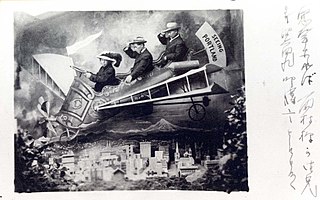
The history of Japanese-Americans and members of the Japanese diaspora community, known as Nikkei (日系), in the greater Portland, Oregon area dates back to the early 19th century. Large scale immigration began in the 1890s with the growth of the logging and railroad industries in the Pacific Northwest, after the Chinese Exclusion Act of 1882 limited migration of new cheap labor from China and those other areas controlled by the Qing dynasty.
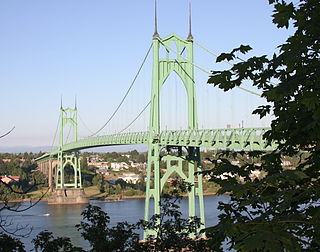
North Portland is one of the six sextants of Portland, Oregon.
Juneteenth, a celebration of emancipation from slavery, was introduced to Oregon in 1945 by Kaiser Shipyard worker Clara Peoples, was recognized by the city of Portland in 1972, statewide in 2013, and federally in 2021.

Kent Ford is a co-founder of the Portland chapter of the Black Panther Party in the U.S. state of Oregon in 1969.
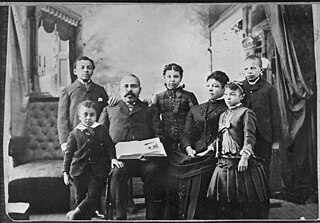
African Americans in Oregon or Black Oregonians are residents of the state of Oregon who are of African American ancestry. In 2017, there were an estimated 91,000 African Americans in Oregon.

The 1948 Columbia River flood was a regional flood that occurred in the Pacific Northwest of the United States and Canada. Large portions of the Columbia River watershed were impacted, including the Portland area, Eastern Washington, northeastern Oregon, Idaho Panhandle, northwestern Montana, and southeastern British Columbia. A publication of the U.S. Geological Survey in 1949 stated property damage reached $102.7 million, 250,000 acres of farmland were flooded, 20,000 acres of land were damaged or destroyed, and at least 16 died in the flood ; estimates for total deaths from the flood go as high as 102. Among the damage was the complete destruction of Vanport, in the Portland metropolitan area, which was the second largest city in Oregon at the time. The flood was largely caused by rapid melting of above-average snowpack by heavy precipitation and warm temperatures. It remains the second largest flood recorded on the river.
The following is a timeline of the history of Oregon in the United States of America.














